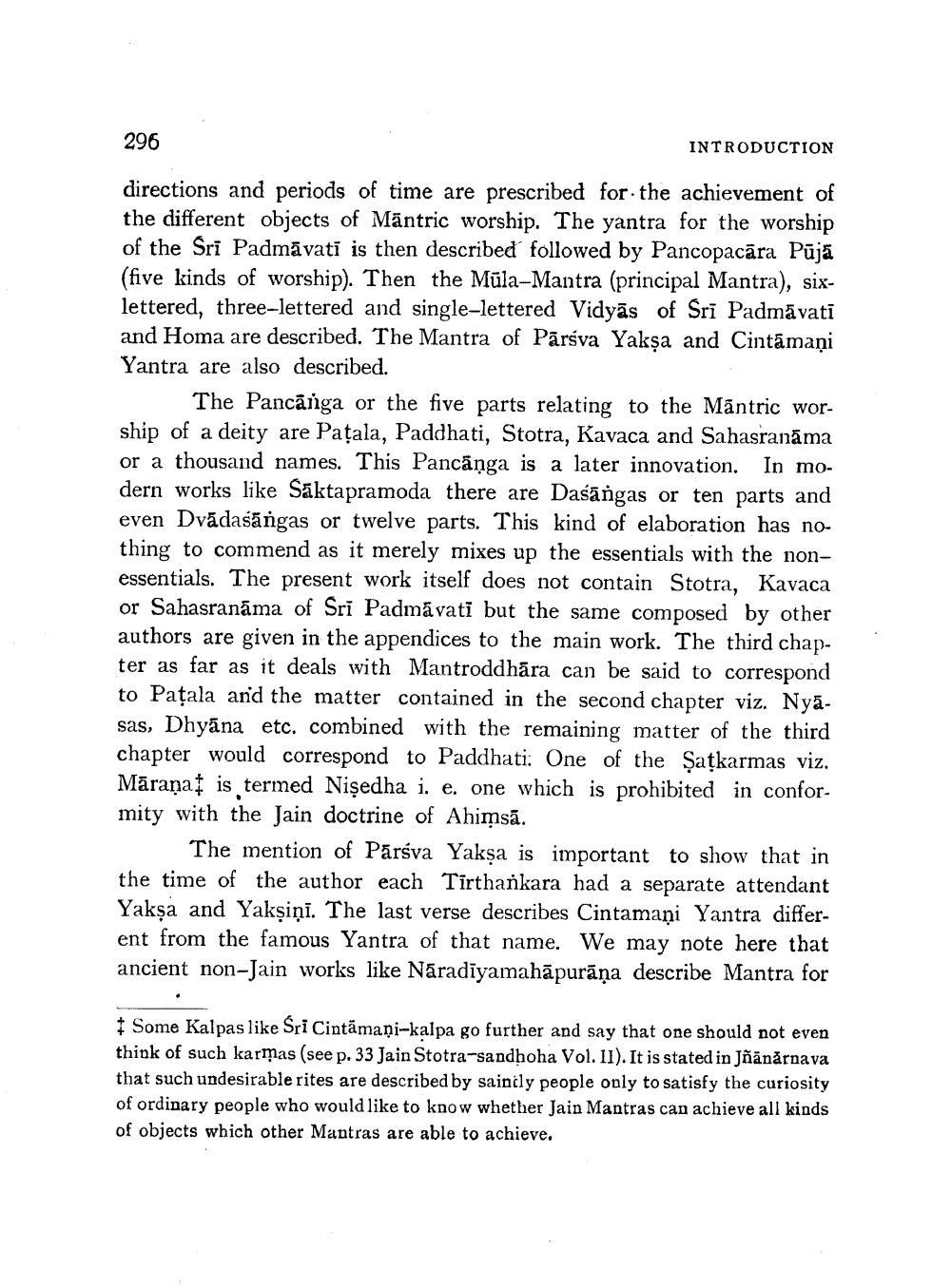________________
296
INTRODUCTION
directions and periods of time are prescribed for the achievement of the different objects of Māntric worship. The yantra for the worship of the Sri Padmāvati is then described followed by Pancopacāra Pūja (five kinds of worship). Then the Mūla-Mantra (principal Mantra), sixlettered, three-lettered and single-lettered Vidyās of Sri Padmāvati and Homa are described. The Mantra of Pārsva Yaksa and Cintamani Yantra are also described.
The Pancānga or the five parts relating to the Māntric worship of a deity are Pațala, Paddhati, Stotra, Kavaca and Sahasranāma or a thousand names. This Pancānga is a later innovation. In modern works like Sāktapramoda there are Dasāngas or ten parts and even Dvādasāngas or twelve parts. This kind of elaboration has nothing to commend as it merely mixes up the essentials with the nonessentials. The present work itself does not contain Stotra, Kavaca or Sahasranama of Sri Padmavati but the same composed by other authors are given in the appendices to the main work. The third chapter as far as it deals with Mantroddhāra can be said to correspond to Pațala and the matter contained in the second chapter viz. Nyā. sas, Dhyāna etc. combined with the remaining matter of the third chapter would correspond to Paddhati: One of the Şatkarmas viz. Māraṇa I is termed Nişedha i. e. one which is prohibited in confor mity with the Jain doctrine of Ahimsā.
The mention of Pārsva Yaksa is important to show that in the time of the author each Tirthankara had a separate attendant Yaksa and Yaksiņi. The last verse describes Cintamani Yantra different from the famous Yantra of that name. We may note here that ancient non-Jain works like Nāradīyamahāpurāņa describe Mantra for
# Some Kalpas like Sri Cintāmaņi-kalpa go further and say that one should not even think of such karmas (see p. 33 Jain Stotra-sandhoha Vol. II). It is stated in Jñānārnava that such undesirable rites are described by saintly people only to satisfy the curiosity of ordinary people who would like to know whether Jain Mantras can achieve all kinds of objects which other Mantras are able to achieve.




